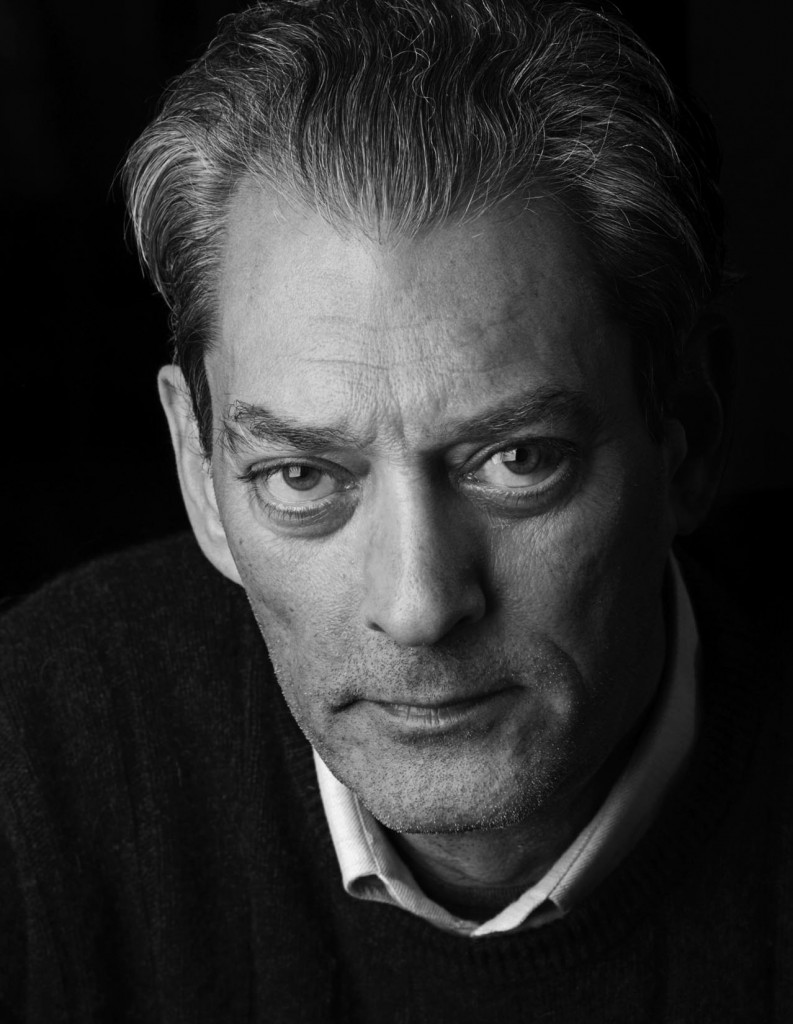
With slicked back hair and his piercing wide-eyed stare, the well known novelist Paul Auster described his first experience making a movie. Co-directing with Wayne Wang, he wrote and directed “Smoke” in 1995. For ten short minutes, in the quiet of the Sergei Courtyard in the center of Jerusalem, he shared the inspiration for the story behind the movie, and the long process of production.
Before the projector lit up, Auster warned us that Smoke was the kind of film in which “not much happens”. It is the story of regular people, the faces we pass everyday on the bus and walking down the street. Like smoke at a bonfire, the presence of these strangers surrounds us and is felt so strongly, yet verges on invisible, and often disappears as suddenly as it comes.
The film introduced a small cast of characters traveling on their separate journeys through life who find themselves crossing paths in unexpected and oddly banal situations. Every character is strikingly different, each with his own life and own challenges. Paul Benjamin, the novelist who can’t move on since his wife’s death, is at the center of this web of connected strangers.
The movie smoothly shifts to other characters, and slowly the circles of people expand and overlap. For example, Auggie, the good hearted owner of the corner store, exposes a hidden passion for photography which is key in displaying one of the central ideas of the story. Thomas Cole, a skinny kid with a rich sense of humor, takes these very ideas and adopts them into his life. These two men introduce their own human ties, new figures that join the growing cast of characters. In his or her way, each asks and tries to answer questions about human relationships and group identity.
A short scene at the beginning of the movie is a harbinger of many of the stories that develop later in the plot. Upon noticing Auggie’s camera and asking to see his photographs, Benjamin, perhaps for the first time, is exposed to the thoughts and insights of this person who sells him his cigars every day. Flipping through the photo albums, the viewers see along with Benjamin that all of the pictures were taken at the same street corner, and share in his confused smile as he remarks, “They’re all the same”.
Auggie puffs his cigarette thoughtfully and explains his project. This is his life’s work – 4000 days, same time and same place. He suggests that Benjamin slow down as he looks. Benjamin grins, hesitates, and repeats, “But they’re all the same.”
“They’re all the same, but each one is different from every other one. You’ve got the bright mornings, and the dark mornings, you got your summer light and your autumn light, you’ve got your weekdays and your weekends, you got your people in overcoats and galoshes, and you got your people in tee-shirts and shorts, sometimes the same people and sometimes different ones, sometimes the different ones become the same and the same ones disappear. The earth revolves around the sun and everyday the sun hits the earth from a different angle.”
My cynical side screamed aloud. The pictures, of course, did look the same to me. Auggie’s words were beautiful, but something in the idea he was expressing seemed too forced, too artificially philosophical. It was like watching a cliché being born.
And yet sitting in Jerusalem, something in his words did resonate as truly profound. I couldn’t help but imagine- what if someone would have created such an album for the past 2500 years here? Eight in the morning, a location in the Old City, everyday. Scenes of worship and war, love and misery. The rich and the poor, the rain and the sun, weddings and funeral processions, tears and smiles. People of all nationalities and walks of life. Just life.
In some eras, it was a cultural center, a religious center, and even a shopping center. And there were periods when, as Auggie stated simply: “It’s just one little part of the world”. Quiet times. But like the street corner, our city has always been there, a silent witness.
How strongly the constant illuminates the variations. The constancy of Jerusalem’s ancient stones emphasizes the differences of those within, yet creates an intimate framework which embraces them all. In this world of Auggie’s dusty albums, where the background is constant, the paradoxical idea of the vastness together with the proximity of strangers can be truly understood.
I watched as Benjamin sucked in sharply when seeing, in a picture from some random morning, eight o’clock sharp, his late wife Ellen captured in a moment by Auggie’s camera. I knew that if I had been there, sitting with Auggie and looking slowly through his albums, Ellen would have been just another face. Where lies the thin line between stranger and friend? I wonder if it becomes more clear just who is what when everything else about the picture is the same, and the people are the ever changing variables.
In “real life”, away from the safety of a singular backdrop, the characters struggle to understand who is a stranger and who is not. There are strangers who become friends – seen in the closeness that blossoms between Benjamin and Thomas. There are those who seem to be friends and are surprised to discover that they are, in fact, strangers – like Benjamin and Auggie, though this realization ultimately led to a more powerful friendship. There are strangers who were once intimate. Auggie meets an old lover. Thomas meets his father. And there are strangers who begin as strangers and end as strangers, yet who manage to affect one another’s life significantly – like Auggie and the petty thief Robert Goodwin.
Strangers and friends alike are trapped between the pages of Auggie’s album. Snippets of hundreds of separate worlds come together to create a single world. Snippets of hundreds of separate worlds have been connected without even knowing it.
This film resonated deeply, reminding me how everyday life brings interactions with entire worlds. Like the known cliché, that we are surrounded by strangers who are friends waiting to happen. And perhaps even more significantly, that part of the makeup of our lives is the insignificant interactions with strangers as they are. Auster and Wang succeeded in capturing these human moments, these everyday exchanges in a way so real, that though it may be a movie in which “not much happens”, I would recommend it enthusiastically for a shot of insight, a dose of wisdom.
LEILA DASHEVSKY
Paul Auster was in Israel as a guest of the 2nd International Writer’s Festival 2010, which took place at Mishkenot Sha’ananim. The film “Smoke” was screened at the Sergei Courtyard on May 5, in an intimate encounter with the audience, as part of “Between the Lines” – events that explore the connection between the written word and other forms, such as cinema, music and theatre. “Between the Lines,” sponsored by the Schusterman Foundation, is a herald of things to come in 2011, when The Jerusalem Season of Culture will be launched.






Excellent Job with outstanding insight. Leila has a great ability to really make difficult concepts “real” and pertinent. There is a maturity belying her years
An exceptionally thoughtful review!
Outstanding review!
Comments are closed.